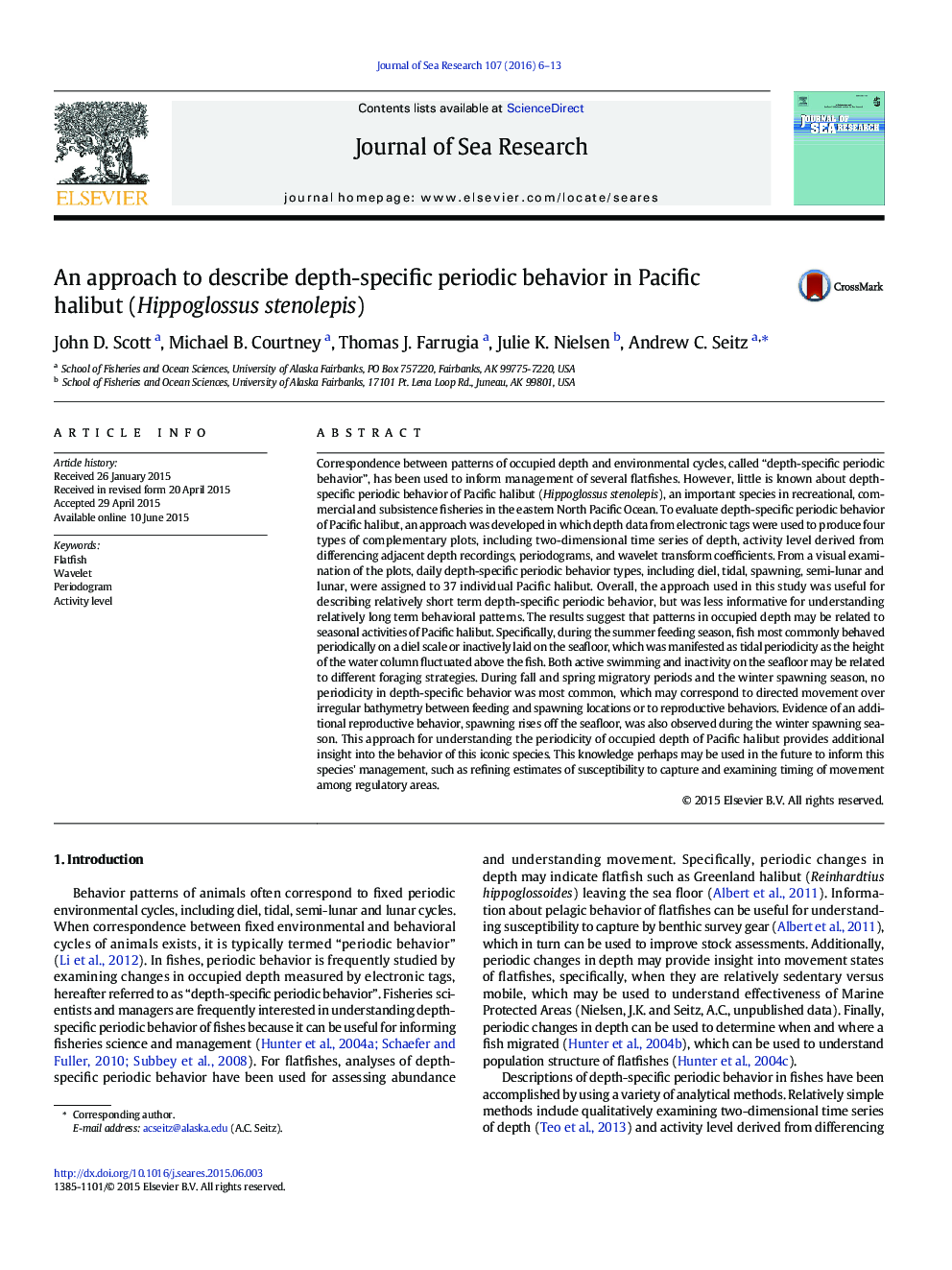| کد مقاله | کد نشریه | سال انتشار | مقاله انگلیسی | نسخه تمام متن |
|---|---|---|---|---|
| 4549632 | 1328088 | 2016 | 8 صفحه PDF | دانلود رایگان |

• The approach used four complimentary analyses to analyze depth of Pacific halibut.
• The approach described short term, but not long term, behavioral patterns well.
• Periodic behavior was observed on diel, tidal, and semi-lunar time scales.
• It is likely that periodic behavior is related to seasonal behaviors.
Correspondence between patterns of occupied depth and environmental cycles, called “depth-specific periodic behavior”, has been used to inform management of several flatfishes. However, little is known about depth-specific periodic behavior of Pacific halibut (Hippoglossus stenolepis), an important species in recreational, commercial and subsistence fisheries in the eastern North Pacific Ocean. To evaluate depth-specific periodic behavior of Pacific halibut, an approach was developed in which depth data from electronic tags were used to produce four types of complementary plots, including two-dimensional time series of depth, activity level derived from differencing adjacent depth recordings, periodograms, and wavelet transform coefficients. From a visual examination of the plots, daily depth-specific periodic behavior types, including diel, tidal, spawning, semi-lunar and lunar, were assigned to 37 individual Pacific halibut. Overall, the approach used in this study was useful for describing relatively short term depth-specific periodic behavior, but was less informative for understanding relatively long term behavioral patterns. The results suggest that patterns in occupied depth may be related to seasonal activities of Pacific halibut. Specifically, during the summer feeding season, fish most commonly behaved periodically on a diel scale or inactively laid on the seafloor, which was manifested as tidal periodicity as the height of the water column fluctuated above the fish. Both active swimming and inactivity on the seafloor may be related to different foraging strategies. During fall and spring migratory periods and the winter spawning season, no periodicity in depth-specific behavior was most common, which may correspond to directed movement over irregular bathymetry between feeding and spawning locations or to reproductive behaviors. Evidence of an additional reproductive behavior, spawning rises off the seafloor, was also observed during the winter spawning season. This approach for understanding the periodicity of occupied depth of Pacific halibut provides additional insight into the behavior of this iconic species. This knowledge perhaps may be used in the future to inform this species' management, such as refining estimates of susceptibility to capture and examining timing of movement among regulatory areas.
Figure optionsDownload as PowerPoint slide
Journal: Journal of Sea Research - Volume 107, Part 1, January 2016, Pages 6–13